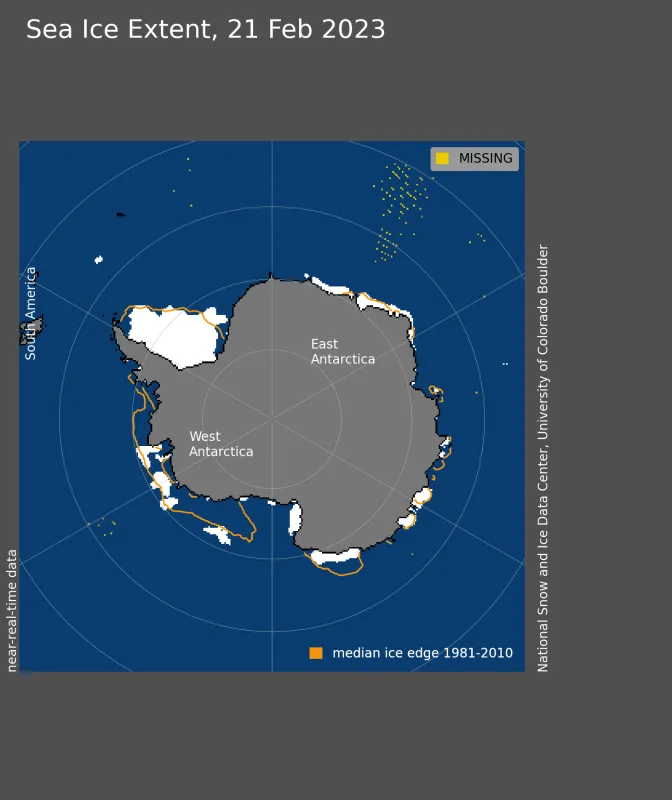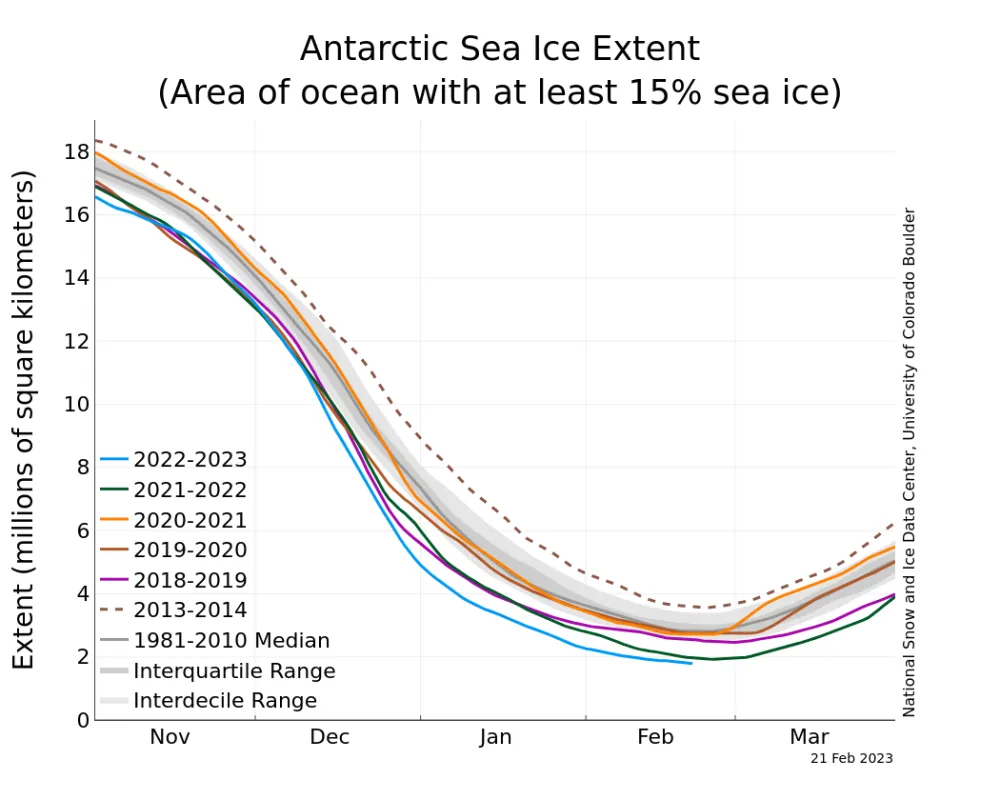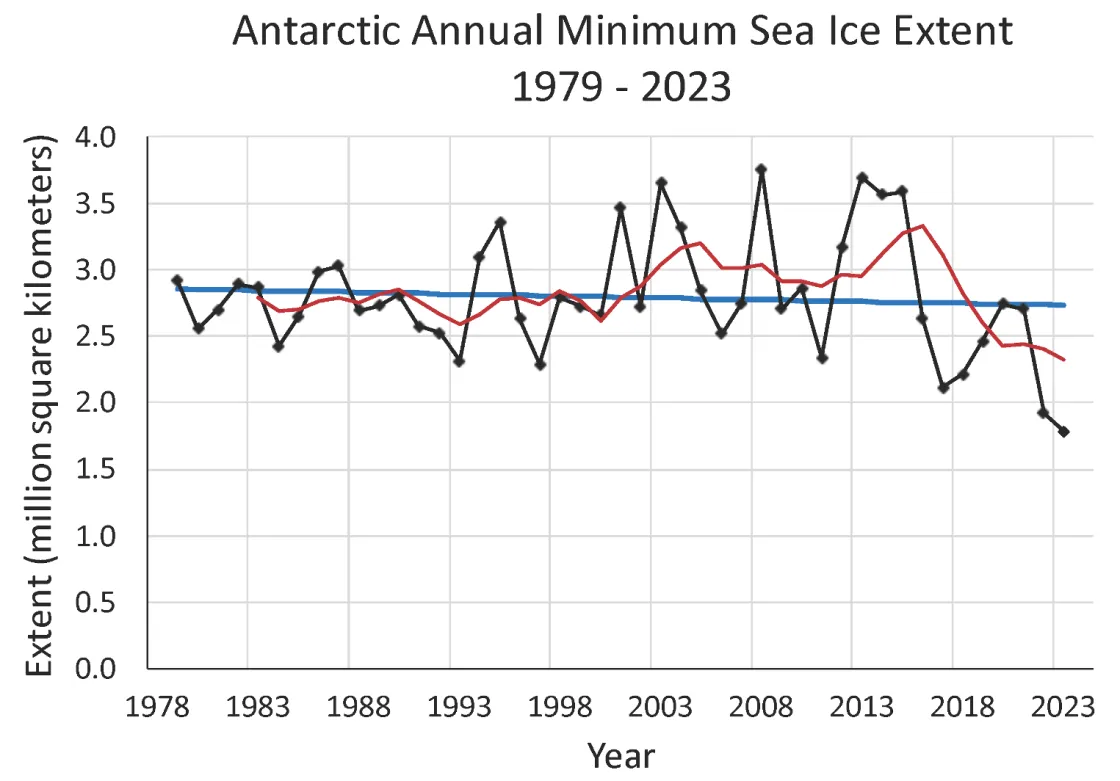On February 21, Antarctic sea ice likely reached its annual minimum extent of 1.79 million square kilometers (691,000 square miles). This the lowest sea ice extent in the 1979 to 2023 sea ice record, setting a record low for the second straight year.
Please note that this is a preliminary announcement. Changing winds or late-season melt could still reduce the Antarctic ice extent. NSIDC scientists will release a full analysis of the Antarctic and Arctic February conditions in early March.
Overview of conditions
On February 21, 2023, sea ice in the Antarctic reached an annual minimum extent of 1.79 million square kilometers (691,000 square miles), setting a record low in the satellite record that began in 1979. This year’s minimum is 1.05 million square kilometers (405,000 square miles) below the 1981 to 2010 average Antarctic minimum extent. It is 136,000 square kilometers (52,500 square miles) below the previous record low from February 25, 2022. Nearly all of the remaining ice is in the Weddell Sea, with isolated patches along the coasts of Princess Astrid and Princess Ragnild and regions of eastern Wilkes Land and the Pine Island Bay.
The Antarctic minimum extent was reached three days earlier than the 1981 to 2010 median date of February 24. The interquartile range for the date of the Antarctic minimum is February 20 to February 27.
Conditions in context
This year marks a second consecutive record low in Antarctic sea ice extent (Figure 2a). In recent years, 2017 and 2018 also reached very low extents, third and fourth lowest, respectively. With this series of low years, it is natural to speculate if there is now a downward trend. However, a trend computed over such a short time period is not especially meaningful. Note in this respect that 2013 through 2015 saw near record high minimum extents.
Overall, the downward trend in the annual Antarctic sea ice minimum extent computed over the complete satellite record is 2,800 square kilometers (1,100 square miles) per year, or 1.0 percent per decade relative to the 1981 to 2010 average. This trend is not statistically significant (Figure 2b). This is in stark contrast to the Arctic where the trend in the sea ice minimum is larger in magnitude and has strong statistical significance.


